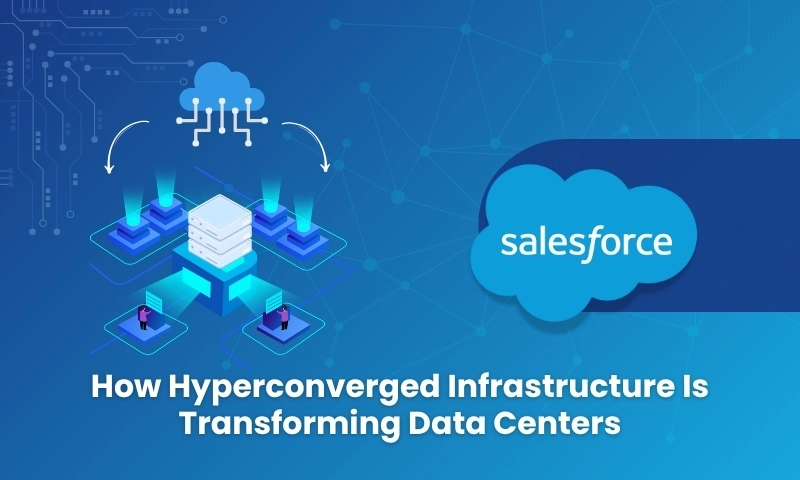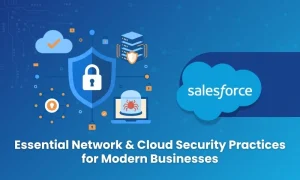The modern data center is under more pressure than ever.
Legacy systems—built on separate servers, storage arrays, and networking hardware—can no longer keep pace with the speed, scale, and complexity of today’s digital enterprises.
Workloads are exploding, energy costs are climbing, and the demand for real-time analytics and AI is relentless.Traditional architectures simply can’t provide the agility or efficiency that modern business requires.
That’s where Hyperconverged Infrastructure (HCI) steps in, a smarter software-defined approach that’s transforming how enterprises build, manage, and scale their IT foundations.
What Is Hyperconverged Infrastructure (HCI)?
At its core, HCI simplifies everything. It unifies compute, storage, and networking into a single, software-defined platform that’s centrally managed through one interface.
Instead of relying on complex hardware stacks, HCI runs on commercial off-the-shelf (COTS) servers.A hypervisor virtualizes each component, turning physical resources into shared, scalable digital pools.
In simple terms: HCI turns hardware into code.It makes infrastructure programmable, adaptive, and responsive, able to scale on demand without costly reconfiguration or downtime.
Converged vs. Hyperconverged Infrastructure
To appreciate HCI’s impact, let’s compare it to its predecessor: Converged Infrastructure (CI).
| Feature | Converged Infrastructure (CI) | Hyperconverged Infrastructure (HCI) |
| Integration | Hardware-defined (modular blocks) | Software-defined (virtualized components) |
| Hardware | Vendor-specific | Standard x86 servers |
| Scaling | Complex; adds new modules | Simple; add nodes easily |
| Management | Multiple tools | Unified management console |
| Cost | Higher CapEx and OpEx | Lower TCO; runs on COTS servers |
In essence:
CI combines components; HCI virtualizes them. This shift from hardware-defined to software-defined infrastructure makes data centers programmable, scalable, and future-proof.
Core Components of HCI
Despite its sophistication, HCI is built on five foundational components that work together seamlessly:
1. Hypervisor
The virtualization layer that manages compute, storage, and networking, enabling multiple virtual machines (VMs) to share hardware efficiently.
2. Nodes
Each node combines compute, storage, and network capacity. Multiple nodes form an HCI cluster, allowing near-linear scalability by simply adding more units.
3. Software-Defined Storage (SDS)
Replaces hardware-bound storage with a virtualized storage pool.Features like replication, deduplication, and tiering boost performance and ensure data resilience.
4. Software-Defined Networking (SDN)
Virtualizes the network layer for greater agility and security. SDN allows automated traffic management and seamless connectivity between nodes.
5. Centralized Management
All components are managed from one interface.
Admins can provision, monitor, and automate operations without juggling multiple tools.Together, these elements make HCI modular, scalable, and intelligent, a true backbone for modern data centers.
Why Enterprises Are Choosing HCI Now
According to MarketsandMarkets, the global HCI market is projected to grow from $7.8 billion in 2023 to $19.9 billion by 2028, driven by the demand for scalable, cloud-like agility on-premises.
Here’s why enterprises are embracing it:
1. Effortless Scalability
Need more power? Just add a node.HCI scales horizontally, expanding compute, storage, and networking capacity instantly without downtime.
2. Cost Efficiency
HCI eliminates the need for expensive, vendor-specific hardware.By running on standard servers and automating routine tasks, it cuts both CapEx and OpEx, improving ROI across IT operations.
3. Simplified Management
Forget juggling multiple consoles. With HCI’s single-pane-of-glass management, IT teams can deploy workloads, monitor performance, and automate updates, all from one platform.
4. Performance and Resilience
Tightly integrated compute and storage reduce latency. Built-in replication, backup, and failover capabilities ensure that mission-critical workloads remain uninterrupted, even during outages.
5. Cloud and AI Readiness
HCI bridges on-premises infrastructure with hybrid and multicloud ecosystems. Its software-defined flexibility supports AI, analytics, and ML workloads, dynamically allocating resources for high-performance computing.
6. Sustainability and Energy Efficiency
As global data center energy demand surges, HCI helps reduce power consumption and footprint. AI-optimized HCI clusters have achieved Power Usage Effectiveness (PUE) as low as 1.05, among the best in class for sustainability.
Challenges to Consider (and How to Overcome Them)
Even with its benefits, adopting HCI isn’t plug-and-play. Here’s what enterprises should plan for:
- Vendor Lock-In: Choose platforms built on open standards and APIs to maintain flexibility.
- Migration Complexity: Use a phased approach — start with test environments before full deployment.
- Scaling Boundaries: Combine HCI with composable or disaggregated architectures for massive workloads.
- Skill Gaps: Invest in staff training on automation and policy-based orchestration.
- Security Risks: Strengthen governance with consistent patching and identity controls.
💡 Tip: Partner with vendors offering hybrid HCI solutions that integrate seamlessly with major cloud providers like AWS, Azure, and Google Cloud.
Real-World Use Cases
HCI isn’t a concept — it’s driving real transformation across industries.
- Virtual Desktop Infrastructure (VDI): Simplifies remote access while centralizing management and security.
- AI & Data-Intensive Workloads: Accelerates analytics and training by pooling compute and storage.
- Edge Computing: Deploys compact, high-performance clusters near data sources for low-latency operations.
- Disaster Recovery (DR): Ensures business continuity through built-in replication and rapid failover.
- Hybrid Cloud Deployments: Enables unified control across on-premises and multicloud environments.
- Government Modernization: Virtualizes legacy systems securely while meeting compliance standards.
Example: A U.S. healthcare agency implemented HCI to replace legacy storage arrays and achieved a 35% cost reduction while improving workload speed and data resilience.
The Future: AI-Driven and Sustainable Data Centers
Tomorrow’s data centers won’t just be faster, they’ll be autonomous, adaptive, and green.
HCI lays the groundwork for this future through:
- AI Integration: Self-healing, predictive optimization, and automated workload orchestration.
- Edge Expansion: Modular HCI clusters bring cloud-grade performance closer to users.
- Sustainability: Reduces carbon impact by consolidating infrastructure and improving PUE.
- Composable Infrastructure: The next step, where compute, storage, and network resources are dynamically assembled by software.
In short, HCI is the bridge between traditional IT and the intelligent, cloud-first era.
The Future Is Hyperconverged
The rise of Hyperconverged Infrastructure marks a pivotal shift in enterprise IT. It simplifies operations, reduces costs, and empowers organizations to innovate faster, all while supporting sustainability and AI transformation.
By unifying compute, storage, and networking in one software-defined platform, HCI delivers the performance, scalability, and agility that modern enterprises demand. The data center of tomorrow isn’t just efficient; it’s smarter, sustainable, and hyperconverged.
Key Takeaway:
HCI isn’t just an infrastructure upgrade, it’s the digital backbone powering the next generation of intelligent, energy-efficient, and AI-ready data centers.







